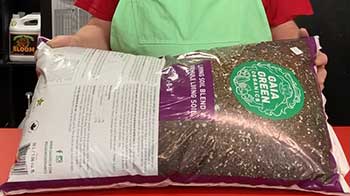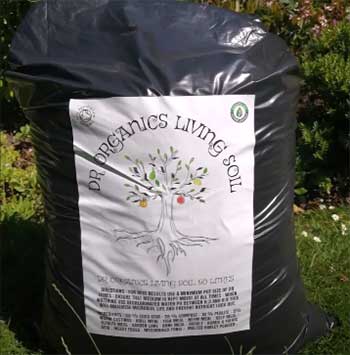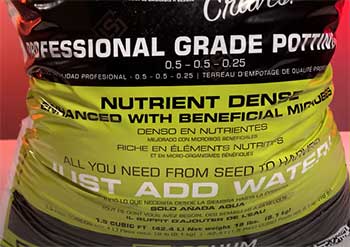A growing technique called living soil focuses on the microbial activity present in the soil.
Living soil contains active microbiology and a range of organisms, such as worms and their castings, protozoa, good bacteria, amoebas, kelp extracts, and even glacial rock dust.
Though Gaia Green living soil is one of the most popular living soil in the market, you can find some other fantastic living soil brands that you might absolutely love.
Go through the entire article so that you do not miss anything.
Gaia Green Living Soil Substitutes To Consider

Here I’ve listed down some of the alternatives so that you can take your decision easily-
- Dr. Organics Living Soil
- Elite Living Soil
- Sohum Living Soil
- DIY Living Soil
Let’s talk about them more elaborately.
- Dr. Organics Living Soil
The first alternative that you can consider for your soil is Dr. Organics living soil. For more than 20 years, Dr. Organics Living Soil Ltd. has focused on organic living soils.
To assure great quality, their compost is prepared on-site from their own forest products and organic vegetation.
Their entire organic soil is 100% British-grown and biodegradable. To create the best soil possible for growing plants and vegetables, they combine a variety of dried additives with their compost.

They try to deliver a product that is natural, renewable, and friendly to the environment.
They also use biodegradable packaging.
They make sure to deliver great service that goes above and beyond for their clients.
They can assist you with everything from finding the ideal products for their requirements to providing nationwide delivery.
They claim that their products will meet your demands, whether you’re seeking soil for your back garden, allotment, or potted plants.
But it has a few drawbacks also. This has a slight odor when freshly opened and combined with your organic soil. However, this can be a useful addition to the soil mixture.
- Elite Living Soil
Rich and varied fungal and bacterial composts, premium worm castings, organic peat moss, perlite, PBH rice hulls, and high-quality biochar are used to create Elite living soil.
A complete mixture of paramagnetic stone dust and certified organic amendments is also added to it.
This living soil can nourish your plants for up to three months or longer if you just add water to it. But make sure the container you’re using is big enough for the plant you’re cultivating.
Elite living soil is also certified by MycoApply Certification. During mixing, they also add their probiotic soil inoculant, which contains good bacteria.
To pre-moisten their living soil, they add organic aloe flakes, yucca extract, and fulvic acid.
This living soil is also very affordable. You can buy a packet of Elite living soil for just $ 34.00 which will cover up to 1.5 cubit fit.
- Sohum Living Soil

With Sohum Living Soils, plant feeding, growth, and harvesting are very simple.
Sohum living soil can be the perfect alternative for Gaia Green.
Sohum living soil consistently supplies high levels of potassium, phosphorus, nitrogen, calcium, sulfur, and magnesium to your crops, ensuring outstanding flavor and quality.
When growing on Sohum living soil, there is no need for nutrients, pH adjustments, or flushing – just watering the soil will be enough.
It is not advised to use full-strength Sohum for this purpose since during the mixing process, a microbial interaction is developed. For these kinds of applications, it is advised to mix Sohum and organic seed starter soil 50/50.
- DIY Living Soil
Living soil can be made at home, and it can be a perfect alternative to Gaia Green if you follow a few steps carefully. For the base mix, you will need pumice, perlite, or sphagnum peat moss.
As a result, the soil will be able to breathe and retain water, and the root system will have the room it needs to grow.
The next step is the amendment. For soil amendment, you can add wood ash, kelp meal, crustacean meal, and green manure and mix it all together.
Is Gaia Green Living Soil Worth It?
The one word to answer this question is ‘yes’; Gaia Green living soil is totally worth it.
Gaia Living Soil is the preferred potting mix for adopting a holistic, ecological approach to cultivating potted plants since it is pre-charged with slow-release organic fertilizers.
Your plants can grow to their full capacity on this soil. It’s as easy as opening a bag and putting your preferred amount of living soil into a container.
For strong, healthy plants and flavorful crops, Gaia Green is the best living soil that you can rely on.
Frequently Asked Questions (FAQ)
If you want to be particularly budget- and environmentally conscious, you can make your own compost at home. To make living soil at home, just combine one part sphagnum peat moss, one part compost, and one part perlite or pumice for aeration.
Yes, you can use Gaia Green in soil. Gaia Green is a great alternative that will save you money if you have new soil deficient in nutrients or want to modify your current soil. While Gaia Green offers a variety of fantastic products, the All-Purpose 4-4-4 and Power Bloom 2-8-4 will meet all of your nutritional requirements.
Yes, Gaia Green is organic. It is the go-to option for organic farmers looking for a simple solution to all of their fertilizer needs.
You can use living soil for almost two weeks. If leaving for longer than two weeks, make sure to water the mixture; this will keep it in use for up to six months.
Final Words
With the help of living soil, growers can reuse soil for a number of years and save money on labor, fertilizer, and growing medium. Living soil will help to grow healthy, high-quality plants using a totally natural organic growing method.
I hope these alternatives to Gaia Green living soil will help you to find the perfect living soil and eliminate the need for extra inputs such as fertilizers, insecticides, and other chemicals.
